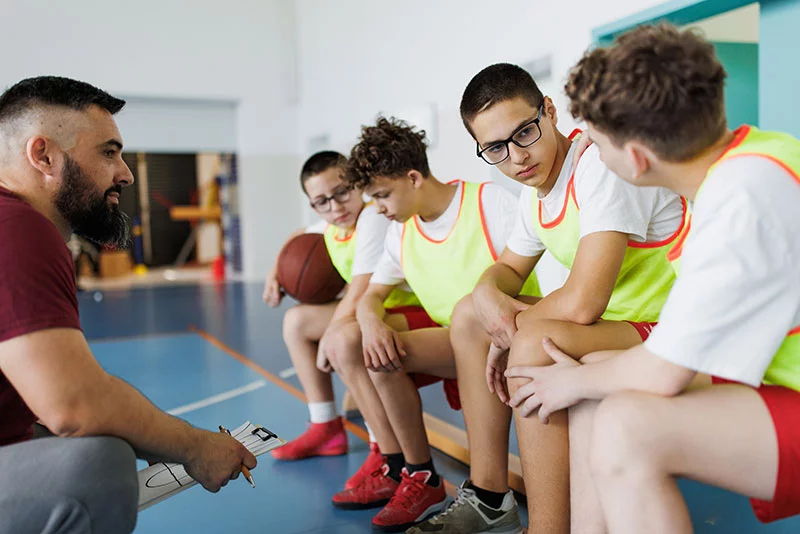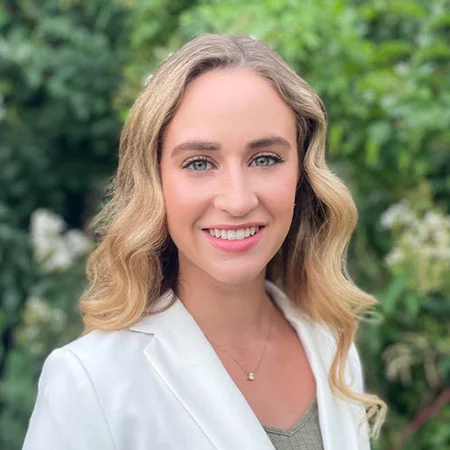
The benefits of exercise aren’t a secret, even if some of us require some prodding to get active.
The question of how exercise affects groups of people — as well as individuals — is trickier to answer. That’s the challenge for researchers at the University of Colorado School of Medicine. They are investigating how regular exercise might help autistic teenagers, physically, emotionally and socially.
It’s not a clear-cut task. A cardiologist has a good idea of how exercise strengthens a patient recovering from a heart attack. A doctor treating older people won’t hesitate to prescribe regular activity to preserve muscle tone and stave off frailty.
The benefits aren’t as easy to define for a person with autism (or autism spectrum disorder, the term used by the American Psychiatric Association). The condition broadly affects the brain’s development and can affect an individual’s communication and social relationships.
The idea that exercise might help people with autism better engage socially while decreasing mental health challenges like anxiety and depression represents “a relatively new area of intervention,” said Kelly Cosgrove, a post-doctoral fellow with the Developmental Psychobiology Research Group T32 Training Program at the University of Colorado School of Medicine’s Department of Psychiatry.

Cosgrove said that a small number of studies have produced evidence that exercise could help autistic individuals interact socially with others. She hopes to build on that work with a nearly completed study she leads.
Can exercise drive changes in the bodies and brains of kids with autism?
The trial investigates the possible changes exercise could make in the bodies and brains of 13- to 19-year-old teenagers. Many study participants have participated in JFK Partners, a 60-year-old program in the Section of Developmental Pediatrics at the School of Medicine that serves people with developmental disabilities, including autism. Its associate director, Judy Reaven, is a mentor of Cosgrove’s and has a doctorate in psychiatry.
The teenage recruits completed a prescribed exercise regimen that Cosgrove’s primary mentor, Dr. Kristina Legget, designed. Legget is an associate professor in the Department of Psychiatry.

The study enrolled sedentary youngsters who were active for less than one hour a week. After joining the study, the young people exercised at least three times a week for 30 minutes over a 10-week period. They chose any physical activity that raised their heart rate to a moderate level, kept logs and wore Fitbits to track their activity.
Legget launched her study to see if the young people would stick with a regular exercise routine and to explore early signs of how exercise might affect their brains. Building on her work, Cosgrove is now examining the effects of the exercise routine on two key areas suspected to have a role in autism: the brain’s default mode network and levels of inflammation in the body.
Default mode network: A door to self-perception
The default mode network connects several areas of the brain and is most active while the brain rests. During these times, the brain regions busily communicate, giving free rein to imagination and daydreams and providing an environment for individuals to reflect and build perceptions of themselves in relation to the rest of the world.
Like any communication system, however, the default mode network signals may vary, with the levels of communication changing during different stages of an individual’s development, Cosgrove said. Too much network activity might cause a person to ruminate or get stuck overthinking problems. But weaker communications between the brain regions may lead to differences in the way people perceive themselves and interact socially.
“These are the areas we’re interested in understanding better in autism,” Cosgrove said. “We don’t have great data on how the default mode network develops in the brains of autistic people over time, but we do know that it tends to look different from those without autism.”
An effort to monitor the default mode network
To measure the possible effects of exercise on the default mode network, Cosgrove is using functional magnetic resonance imaging to look at brain activity while teens are resting and completing a “theory of mind” task before and after the study.
The task measures a person’s ability to understand the motivation of others, Cosgrove said. Participants watch a series of animated shapes move on a screen and identify whether they are moving around randomly or interacting with each other in some way.

People with autism may be more likely to interpret the shapes’ movement as random, Cosgrove said, rather than intentional attempts to snuggle or surprise one another – a sign of possible differences in imagining other people’s perspectives and connecting with them.
“If the imaging show changes in the brain, that’s an exciting sign, even if we don’t see changes in behavior,” Cosgrove said. “It may be that you have to exercise longer to see changes in behavior and mental health. That’s one of the things we are trying to understand with this initial study.”
Understanding inflammation and its connection to autism
Cosgrove also received permission from the study participants to draw blood at the beginning and end of the study. The goal: study the possible effects of exercise on constant low levels of inflammation revealed in some research on autistic youth.
She measures levels of three specific cytokines, which are proteins that help our immune system regulate inflammation. Inflammation is a good thing when we have an injury or infection. But sometimes the immune system gets out of balance, causing too-high levels of cytokines to circulate constantly in the blood.
“It’s like someone turns up the inflammatory dial a little bit,” Cosgrove said. The three cytokines she selected for the study are those with the strongest connections to higher levels in people with autism, she added.
How might inflammation relate to autism? Cosgrove said an important part of a person’s response to inflammation is “sickness behavior,” which includes withdrawing socially so as to not infect other people. That is natural when someone is recovering from illness, but if low-level inflammation is constant, an individual may have less energy and motivation to connect socially.
Exercise as an inflammation and isolation antidote
“The hypothesis is that when people are experiencing even this low-grade level of constant inflammation, it could be fostering these sickness behaviors,” Cosgrove said. Conversely, if regular exercise helps to lower inflammation levels in people with autism, which it has been shown to do in other groups, that could lead to more social engagement.
Cosgrove acknowledged that whatever she finds in her investigation, exercise alone will not address the wide range of social or cognitive differences that autistic youth can experience.
“Some may not see benefits from exercise in these areas, while others may already be well-adapted to their own strengths and needs,” she said.
She noted, however, that exercise brings physical and often mental health benefits to all people. Exercise can also be an antidote to the inactivity and isolation that grips many young people in an age dominated by social media, gaming and screen-gazing, she added.
“Feeling lonely and isolated can be a challenge for all teens,” Cosgrove said. “If we can think of ways to make social engagement more exciting and fun, I think that is clinically relevant.”
Cosgrove’s work dovetails with the longtime efforts of her mentor, Reaven, who focuses on lightening the burden of anxiety in kids with autism. Rates of anxiety are higher for these youths than for their non-autistic counterparts, she said.
There is “no single pathway” that can lead to the development of anxiety symptoms, Reaven said. However, she noted that one theory rests on the idea that autistic and non-autistic people live in different social worlds. Their separation may lead to misunderstandings and misperceptions as they interact. That disconnect, in turn, may lead to anxiety in autistic youth, Raeven said.
Cognitive behavioral therapy with a twist for kids with autism
Reaven said she and her colleagues with JFK Partners use cognitive behavioral therapy (CBT) to treat kids with autism, but they modify the treatment.
“The approach in many ways is quite similar to what we would do with our non-autistic peers, but we make CBT more accessible for different learners,” Reaven said.
That strategy, which she developed along with her colleagues two decades ago, as a program called “Facing Your Fears,” includes making CBT more visual, concrete and accommodating to the way kids with autism think and learn.
More recently, Reaven and her colleagues have worked toward training school-based providers to use the Facing Your Fears program to help autistic students manage their anxiety during the school day within their own schools. She currently leads a school-based study that includes Emory University School of Medicine in Atlanta and the University of North Carolina in Chapel Hill’s TEACCH program.
The $2.8 million trial, funded by the Patient-Centered Outcomes Research Institute (PCORI), compares the effectiveness of a Facing Your Fears in Schools program and another approach in supporting autistic kids with anxiety.
While Reaven’s work focuses on managing anxiety, she said exercise can “absolutely be an important tool” within the Facing Your Fears program’s approach to helping kids understand “what you do to manage your body’s reaction” to stress.
Physical activity need not be a formal exercise program, she said. It might be walking, playing with the family pet or swimming.
“We talk about things that any of us would want to do to calm, reset, and chill,” Reaven said.
An aim to help kids with autism reach their individual potential
Both Reaven and Cosgrove said that their work aims to help people with autism thrive as themselves, rather than fitting into an ill-suited mold.
Reaven said that when she first began her work evaluating autistic youth, “there was more of a focus on helping them fit in with society or viewing their social and communication differences as impairments that required treatment or ‘fixing’.” That approach sometimes led, inadvertently, to limiting them or conveying the message that their social and communication preferences were deficits that needed to be corrected, she said.
That’s changed, Reaven said. Many providers now take a more “neurodiversity-affirming” approach that recognizes and respects differences in the ways the brain functions in people, including those with autism. That means paying more attention to the voices of autistic adults “expressing what they want for their lives and how things could have been different for them as children,” she said.
“Respecting and incorporating the preferences and priorities of autistic youth into intervention programs is essential,” she said. “It’s fun to support folks and learn the best ways to support our communities so they don’t experience barriers and can do whatever they want in life,” she said.
For her part, Cosgrove believes that her work on the exercise study could help to support young people with autism.
“If we find that exercise changes activity in the default mode network and/or lowers inflammation, it could suggest that physical activity helps to support brain function and overall health in autistic teens. This might eventually inform new ways to promote well-being for them,” she said.
“We’re not trying to ‘cure’ autism,” Cosgrove said. “We’re thinking about how we might tailor the environment to support someone who is autistic so they can have a better quality of life. That is really the goal.”
